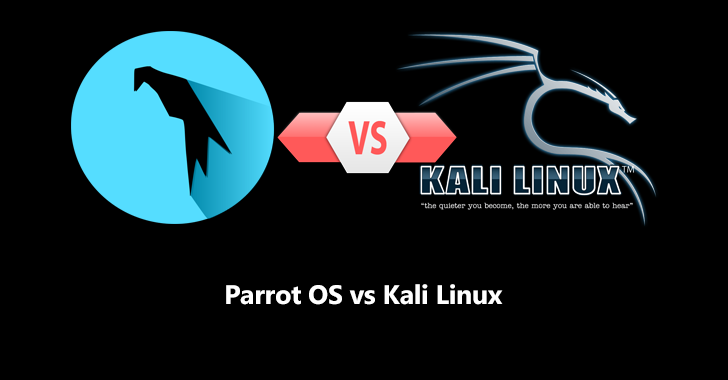Choosing the right operating system is critical for cybersecurity professionals and privacy advocates. When it comes to penetration testing, ethical hacking, or maintaining your privacy online, Kali Linux and Parrot OS are two names that stand out. But which one is better suited to your needs? Let’s compare these two powerhouse operating systems in detail, exploring their features, performance, security, and usability.
What Are Kali Linux and Parrot OS?
Kali Linux
Developed and maintained by Offensive Security, Kali Linux is a Debian-based distribution geared specifically towards penetration testing and security auditing. Widely recognized in the Cybersecurity industry, Kali comes pre-loaded with hundreds of cybersecurity techniques and tools, such as Wireshark, Nmap, Metasploit, and Aircrack-ng.
Its primary focus is offensive security, making it an essential tool for penetration testers and ethical hackers who need a reliable OS to simulate attacks and identify vulnerabilities.
Key Features of Kali Linux:
- A large arsenal of pre-installed hacking and testing tools.
- Frequent updates to incorporate the latest OWASP Top 10 2023 security exploits.
- Detailed documentation for both beginners and experts.
- A focus on offensive security testing.
Parrot OS
Parrot OS, developed by Parrot Security, is another Debian-based distribution that combines cybersecurity techniques with an emphasis on privacy and versatility. It offers tools not only for penetration testing but also for privacy enthusiasts who want to remain invisible on the internet.
Compared to Kali, Parrot OS is more user-friendly and versatile, making it a suitable choice for cybersecurity learners and privacy advocates alike.
Key Features of Parrot OS:
- Pre-installed tools for penetration testing, forensics, and development.
- Built-in anonymization tools to enhance internet privacy.
- A lightweight design for smoother performance on lower-end machines.
- Broad support for data protection and encrypted communication.
Kali Linux vs. Parrot OS: A Head-to-Head Comparison
Now that we’ve introduced both, let’s break down the key differences across a variety of criteria.
1. Target Audience
- Kali Linux is designed for professionals, particularly penetration testers, ethical hackers, and advanced-level cybersecurity experts.
- Parrot OS caters to a broader audience, including cybersecurity learners, privacy advocates, and tech enthusiasts looking for versatility combined with privacy features.
2. Toolsets for Cybersecurity
- Kali Linux is packed with over 600 specialized tools tailored for penetration testing, offensive security, and network forensics. Tools like Hydra, Burp Suite, and John the Ripper make it ideal for uncovering vulnerabilities.
- Parrot OS also offers a wide range of tools, but with a balance between offensive and defensive techniques. Additionally, it includes development tools, such as those for programming and reverse engineering, as well as privacy-enhancing features like Anonsurf.
3. Focus on Privacy and Anonymity
- Kali Linux is not primarily designed for privacy but can be configured for it. It’s more focused on cybersecurity professionals carrying out specific testing tasks.
- Parrot OS, on the other hand, makes privacy a priority. It includes built-in tools for staying invisible on the internet, such as Tor, I2P, and Anonsurf, which anonymize your web activity and ensure your browsing sessions are safe and private.
4. Ease of Use
- Kali Linux has a steeper learning curve. While its extensive toolset is ideal for experts, it may overwhelm beginners without prior knowledge of cybersecurity techniques.
- Parrot OS, however, is more beginner-friendly with a polished, lightweight interface and better hardware compatibility. It provides an easier transition for those just entering the cybersecurity field.
5. Performance
- Kali Linux can be resource-intensive, especially if you’re running it on older hardware. While it’s optimized for high-performance tasks, low-end machines may struggle.
- Parrot OS, thanks to its lightweight architecture, performs efficiently even on older or low-spec devices, making it a more versatile option for users with limited hardware capabilities.
6. Updates and Community Support
- Kali Linux is backed by Offensive Security and benefits from frequent updates that align with cybersecurity trends 2025. Its community is highly active, though very technical in nature.
- Parrot OS also boasts frequent updates and a supportive community but leans toward a broader, more inclusive user base—not just experts but learners as well.
7. Use Cases
- Kali Linux is largely tailored for penetration testing, network analysis, and offensive security projects where identifying vulnerabilities is key.
- Parrot OS, with its privacy tools and expanded functionality, is equally suited for penetration testing, secure browsing, coding, and risk analysis.
Which One Should You Choose?
The right choice between Kali Linux and Parrot OS boils down to your specific needs:
- Choose Kali Linux if:
- You’re a cybersecurity professional or seasoned ethical hacker.
- Offensive security and vulnerability assessment are your primary focus.
- You need a wide range of specialized tools pre-installed and ready to go.
- Choose Parrot OS if:
- You’re a beginner or intermediate cybersecurity enthusiast.
- You value privacy online and frequently engage in secure communication.
- You prefer a lightweight, versatile OS that works smoothly on low-spec hardware.
If you’re still not sure which OS would suit your requirements better, consider testing both on a virtual machine. Experimenting hands-on will give you a practical understanding of their interfaces, compatibility, and features.
The Future of Cybersecurity Tools
With the rapid pace of technological innovations, tools like Kali Linux and Parrot OS will only evolve. Both operating systems will likely integrate emerging features to reflect future cybersecurity trends 2025, like AI-driven threat detection and dynamic vulnerability testing. Staying updated with these platforms ensures you’re equipped to tackle the complexities of the cybersecurity landscape head-on.
Both Kali Linux and Parrot OS are excellent operating systems that serve the cybersecurity community in different ways. Whether you prioritize extensive tools for penetration testing or seek a balanced platform with privacy features, there’s an OS tailored to your tasks.





